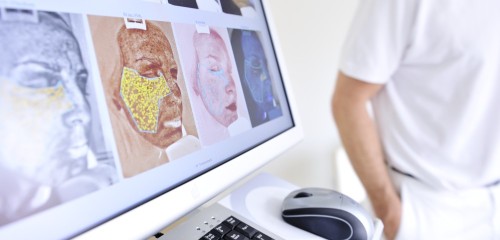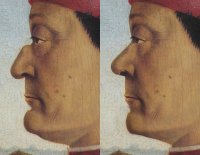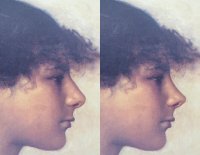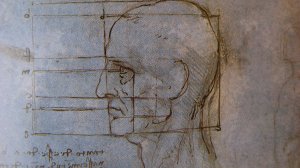
Legal regulations prohibit us from displaying before and after photos. For this reason, here we show some works of visual art to help illustrate the surgeries described, namely, the correction of a hook nose, nose tip correction, and eyelid surgery:



From top to bottom:
Piero della Francesca (1465): Federico da Montefeltro
John Singer Sargent (1878): Head of a girl from Anacapri
Caspar David Friedrich
Digital Photo Simulation and Surgery Planning Munich
Facial plastic surgery procedures can overburden the imagination of the patient, despite all the knowledge in this area. We offer our patients the opportunity to work together with us using digital photo simulation of the desired procedure with a mirror imaging system. This complex image processing system is used primarily by major U.S. clinics for surgical planning.
Leonardo da Vinci
The simulation takes place with full collaboration between doctor and patient. This way, the desired effect is worked through directly together to the result. This makes it possible to graphically clarify the individual situation in virtual real-time. It also ensures that the patient is realistic about the expected results. In any case, an aesthetic measure in the facial area should always be examined for its interaction overall. For example, a nose reduction could potentially reinforce the appearance of an already prominent chin. Alternatively, perhaps it is not so much a matter of reducing the size of the nose as having too small of a chin that disrupts the overall aesthetic impression of the face.
It is often a challenge to present the analyzed problematic appropriately to the patient. Usually, this is primarily due to technical communication. For example, the angular orientation of the nose is correct, but there is too much volume overall, here we need prudent reduction of both the nostrils and the tip of the nose as well as improved definition in the alignment of the nose bridge“. Digital photo simulation is not only a central part of consultation and communication. It is also an important facet of surgery planning. The amount of soft tissue to remove, the degree of the angle of rotation and much more can thereby be determined pre-operatively. Any necessary alteration to the cartilage framework can also be anticipated.
We use digital photo simulation software from Canfield. Additional information in English is also available on their website www.canfieldsci.com.


